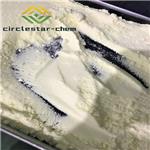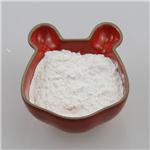- 5-Cyanoindole
-

- $10.00 / 1kg
-
2024-12-20
- CAS:15861-24-2
- Min. Order: 1kg
- Purity: 99%
- Supply Ability: 20 ton
- 5-Cyanoindole
-

- $0.00 / 1kg
-
2024-12-20
- CAS:15861-24-2
- Min. Order: 1kg
- Purity: 99
- Supply Ability: 1000
- 5-Cyanoindole
-

- $200.00 / 10g
-
2022-11-15
- CAS:15861-24-2
- Min. Order: 10g
- Purity: 99%
- Supply Ability: 1000t/month
|
| | 5-Cyanoindole Basic information |
| | 5-Cyanoindole Chemical Properties |
| Melting point | 106-108 °C(lit.) | | Boiling point | 249.72°C (rough estimate) | | density | 1.1777 (rough estimate) | | refractive index | 1.6211 (estimate) | | storage temp. | Keep in dark place,Inert atmosphere,Room temperature | | solubility | Chloroform, Hexane, Methanol | | form | Crystalline Powder | | pka | 15.62±0.30(Predicted) | | color | White to slightly yellow | | Water Solubility | Soluble in chloroform, hexane and methanol. Insoluble in water. | | Sensitive | Air & Light Sensitive | | BRN | 116738 | | InChI | InChI=1S/C9H6N2/c10-6-7-1-2-9-8(5-7)3-4-11-9/h1-5,11H | | InChIKey | YHYLDEVWYOFIJK-UHFFFAOYSA-N | | SMILES | N1C2=C(C=C(C#N)C=C2)C=C1 | | CAS DataBase Reference | 15861-24-2(CAS DataBase Reference) |
| Hazard Codes | Xi,Xn | | Risk Statements | 36/37/38-20/21/22 | | Safety Statements | 26-36-22 | | RIDADR | 3276 | | WGK Germany | 3 | | RTECS | NL5993120 | | F | 8-10 | | Hazard Note | Irritant | | HazardClass | 6.1 | | PackingGroup | III | | HS Code | 29339990 |
| | 5-Cyanoindole Usage And Synthesis |
| Chemical Properties | Off-White Crystalline Powder | | Uses | Reactant used for parallel synthesis of dihydroisoquinolines via silver and L-proline co-catalyzed three-component coupling reaction, preparation of novel PPARα/γ dual agonists for potential treatment of metabolic syndrome and IDDM, chemo selective and regioselective preparation of benzoyl indoles, 4,5-dihydrocyclopenta[c]quinolines by palladium-catalyzed ring-expansion reaction alkynes, using O2 as the oxidant and vinylindoles by hydroarylation of alkynes using indium bromide catalyst. | | Uses | • ;Reactant for parallel synthesis of dihydroisoquinolines via silver and L-proline co-catalyzed three-component coupling reaction1• ;Reactant for chemoselective and regioselective preparation of benzoyl indoles2• ;Reactant for preparation of novel PPARα/γ dual agonists for potential treatment of metabolic syndrome and IDDM3• ;Reactant for preparation of 4,5-dihydrocyclopenta[c]quinolines by palladium-catalyzed ring-expansion reaction alkynes, using O2 as the oxidant4• ;Reactant for preparation of vinylindoles by hydroarylation of alkynes using indium bromi | | Uses | Inhibitor of enzyme. | | Purification Methods | Dissolve the nitrile in 95% EtOH, boil it in the presence of charcoal, filter, evaporate to a small volume and add enough H2O to cause crystallisation and cool. Recrystallise it directly from aqueous EtOH and dry it in a vacuum. UV has at max 276 nm (log 3.6) in MeOH. [Lindwall & Mantell J Org Chem 18 345 1953, 20 1458 1955, Thesing at al. Chem Ber 95 2205 1962, NMR: Lallemend & Bernath Bull Soc Chim Fr 4091 1970, Beilstein 22/3 V 45.] |
| | 5-Cyanoindole Preparation Products And Raw materials |
|